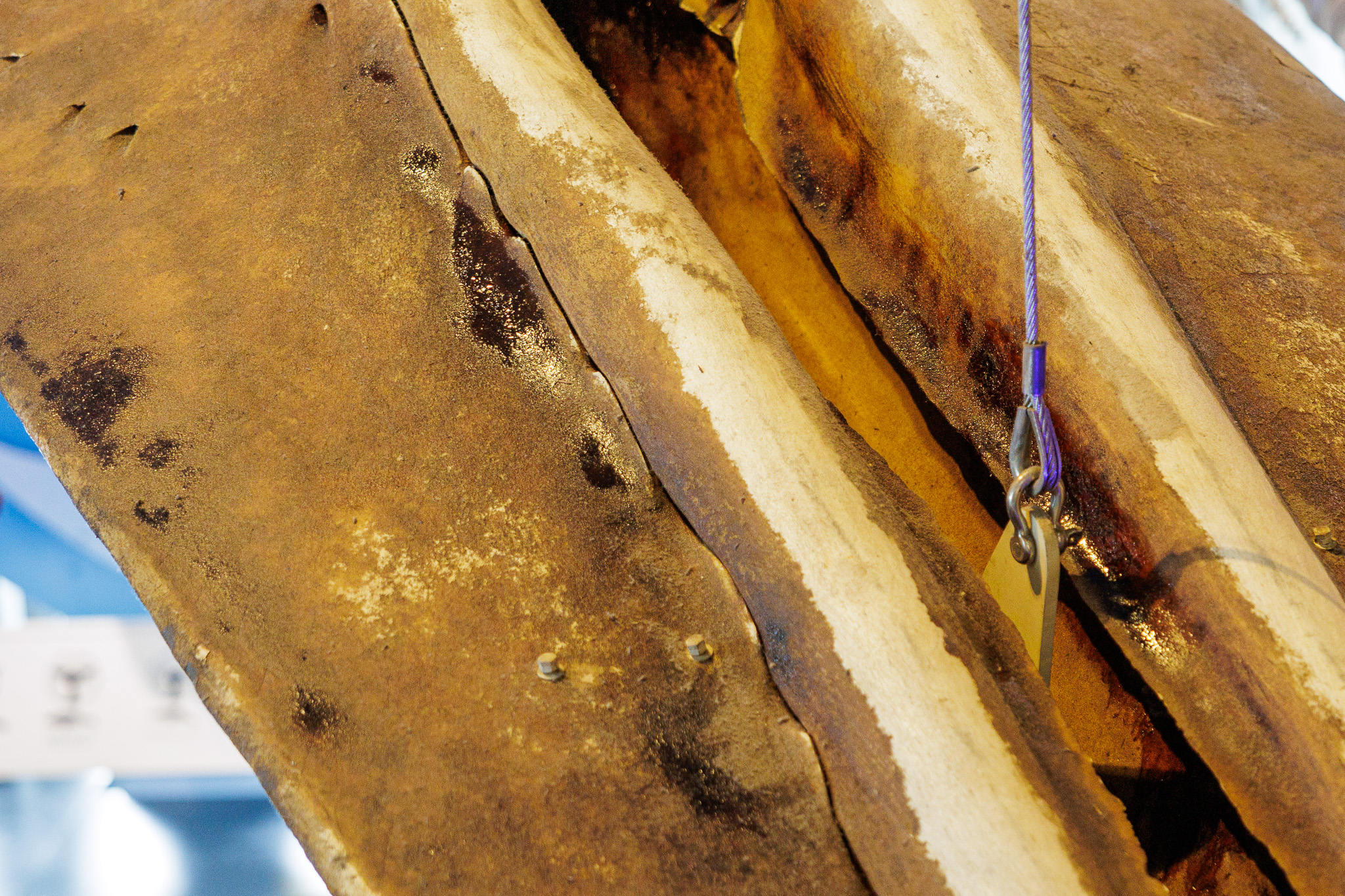New Bedford Whaling Museum in Massachusetts might be home to five impressive whale skeletons, but the blue whale in particular might leave its mark on you. Literally – its skeleton is dripping oil, and it hasn’t stopped doing that for over a quarter of a century.
The blue whale in question is KOBO, standing for King of the Blue Ocean, whose body was discovered on the bow of a tanker back in March 1998. It’d been struck and killed by the propeller of another tanker up in Novia Scotia, before being picked up by the ship it was found on and carried all the way into Narragansett Bay, Rhode Island.
After its discovery, KOBO’s flesh was removed and the bones cleaned – a process which involved submerging them in New Bedford harbor for five months – and reassembled.
“They did a pretty good job of getting the bones clean,” Bob Rocha, New Bedford Whaling Museum’s Associate Curator of Science and Research, told WBZ-TV. “They didn’t get all the oil out though.”
Oil? That’s right – whales are oily. So oily, in fact, that they were sought after specifically for it. Whale oil ended up being used in all manner of different things, including soap, lubricant, margarine, and even explosives at one point.
The oil is found within a whale’s bone marrow and not only helps it to maintain buoyancy, but also acts as a reserve energy source in lieu of blubber, Rocha explained to Popular Science.
That would’ve come in handy when KOBO was alive, but the result of not getting all of its oil out during cleaning is that the 20.02-meter (66-foot) skeleton is still leaking oil 26 years after it was first found.

Don’t worry KOBO, we look a bit oily sometimes too.
Image courtesy of New Bedford Whaling Museum
“I like the fact that that skeleton is oily because it adds to a person’s experience coming in, being able to smell the oil, get a sense of what it might have been like to be stuck on a whale ship for three years,” Rocha told WBZ-TV.
While we’re all for an immersive experience, oil dripping onto the floor isn’t necessarily ideal; the museum has set up a system that catches the oil and sends it into a flask, also to keep track of how much oil is leaking.

People would’ve got a lot of money for this back in World War I.
Image courtesy of New Bedford Whaling Museum
Since that system was set up, the flasks have collected over a liter of oil and that number is likely to keep rising – the museum has estimated that KOBO will likely continue to ooze out oil as far in the future as 2060.
That’s got nothing on the bowhead whale skeleton at London’s Natural History Museum though, which is still dripping oil 160 years after it was collected.
So, if you’re planning on touring the museum world’s whale skeletons, maybe don’t wear your favorite jumper.
Source Link: 26 Years After It Died, This Blue Whale’s Skeleton Is Still Oozing Oil